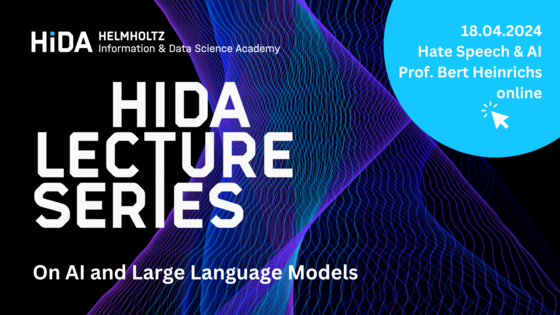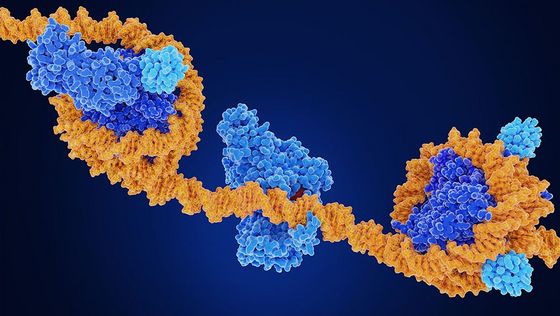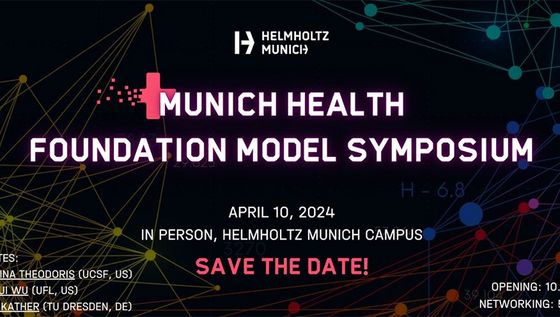|
||||||||
|
||||||||||||||||||||||||
|
|
Despite the current political crises, we must not lose sight of our commitment to combating climate change. It is no longer enough to reduce emissions. It will be necessary to remove greenhouse gases that have already been emitted from the atmosphere. In this month’s Point of View, Detlef Stolten of Forschungszentrum Jülich presents the technology that can do just this. Every day, we at Helmholtz seek answers to the grand challenges of our time. We‘re more than 46,000 people from all over the world. We have adapted the name of our staff section to reflect the current number. This month we talked to Robin Santra from DESY and among other things, he tells us why, as a scientist, he would like to have dinner with a number of artists. We wish you an inspiring read! |
|
|
|
|||||||||||||||||||||||
|
|
|
|||||||||||||||||||||||
|
|
|
|
Epigenetic changes play important roles in cancer, metabolic and aging-related diseases, but also during loss of resilience as they cause the genetic material to be incorrectly interpreted in affected cells. A major study by scientists at Helmholtz Munich published in ’Nature’ now provides important new insights into how complex epigenetic modification signatures regulate the genome. This study will pave the way for new treatments of diseases caused by faulty epigenetic machineries. To decipher the epigenetic code, Till Bartke and co-workers developed a creative way to examine how different combinations of epigenetic modifications work together. They reconstructed many of these modifications in a test tube and carried out experiments to study how they interact with the proteins in our cells, using a combination of sophisticated biochemical and mass spectrometric methods. "Epigenetic modifications usually act in cooperation with so-called epigenetic reader proteins that recognize them and promote downstream effects" explains Andrey Tvardovskiy, post-doctoral researcher and one of the first authors of the study. "Uncovering how epigenetic readers interpret such complex modification signatures is therefore key to understanding how our genome functions and how its misregulation can lead to human diseases". For the first time, the researchers could see how different combinations of modifications are “read” and translated by the protein machineries in our cells. Using newly developed AI approaches, they then set out to decode the language of epigenetic modifications. The researchers found that some constituents of the epigenetic code have a big impact, especially on stretches of the DNA that control gene activation, while others have a smaller effect. By putting together all this information, they managed to extract several fundamental rules of how our genetic material is organized and controlled inside our cells. These insights are highly relevant for many scientists across different fields and are anticipated to catalyze many future discoveries. To ensure that their findings are as widely available as possible, the researchers built a website called the 'Modification Atlas of Regulation by Chromatin States' (https://marcs.helmholtz-munich.de), that provides an intuitive interactive online resource to explore the results of their study. (Image: Juan Gaertner/Shutterstock)
Breakthrough in modeling PFAS in blood are ubiquitous – and they are associated with an increased risk of cardiovascular diseases |
|
I am fascinated by the interplay between experimental and theoretical research. I find it extremely motivating that it is always possible to use the methods of theoretical physics to support the planning of experiments or to link experimental results with a considerable gain in knowledge. In my job I have the opportunity to deal with this intensively, collaborating closely with the members of my group as well as with other researchers both nationally and internationally. I am also excited by the opportunity to contribute to the further development of university teaching.
Over the past 13 years, my group has developed mathematical models and associated software that can be used to predict the microscopic behavior of matter when irradiated with X-ray light. This is useful for gaining a deeper understanding of the fundamental processes that occur in radiotherapy and space travel, for example. At present, however, we are still limited by the complexity of the systems we can observe. If money and time were no object, I would concentrate all my efforts on building a bridge between the molecular scale, on which we primarily operate, and the scale of biological cells.
I can appreciate the creative thought process in the natural sciences quite well. What I find less comprehensible is how artists, for example, manage to captivate so many people around the world. In this respect, I could imagine dinners with J. K. Rowling, Christopher Nolan, Andrew Lloyd Webber, John Cleese and Steve Harris (band leader of Iron Maiden) to gain deeper insights in this regard. I would also like to understand how it is that within Europe, the UK in particular has produced so many special talents. For example, I am interested in how important the role of individualism is in this. |
|
|
|
Firstly, the transition to greenhouse gas neutrality, as set out in the German Climate Change Act, will not be sufficient to achieve the climate goals in the long term. The IPCC’s analyses show that CO2 will have to be actively removed from the atmosphere from around 2060/2070 at the latest in order to achieve the 1.5 or 2 °C goal, respectively. Secondly, it is very expensive to avoid the “last tons of CO2”, for example, in the chemical industry or in aviation. In these cases, CO2 capture and storage is a cheaper alternative, as shown by analyses from the IEK-3 of the Forschungszentrum Jülich. However, this only applies to emissions that are difficult to capture or basic chemicals that are hard to substitute. Thirdly, some CO2 emissions are unavoidable due to chemical reactions during material conversion in production, particularly in cement, quicklime and glass production. Fourthly, the certain intermediate steps of the energy transition are unlikely to be achieved in time. Gas-fired power plants, for example, which are supposed to compensate for lulls of renewable energy supply, might not get supplied with hydrogen in time. Hence, creating an alternate pathway by using natural gas intermediately will contribute to a more robust transition. However, such transitional arrangements should be subject to clear phase-out rules or corresponding costs. How can CO2 be captured and stored? CO2 can be biologically captured and stored through reforestation and peatland restoration, as well as through the use of biomass with subsequent capture and storage. CO2 can be captured after the combustion using proven techniques at localized, i.e., large, constant energy consumers. Direct Air Capture (DAC) of CO2 from the air though, is a new technology that is being investigated intensely by Helmholtz. In the Helmholtz project DACstorE, researchers investigate fundamental processes, develop new capture methods, design plants, identify potential sites worldwide for later operation. Moreover, storage sites are identified and investigated. Particular attention is being paid to the safety of storage facilities, for example, through close monitoring. This technology can fill the gap described above. It is appreciated that the German government’s carbon management strategy focuses on difficult and unavoidable emissions and the transition to renewable energies. As a further step it will be important to address the long-term perspective in a separate strategy. (Photo: Forschungszentrum Jülich / Sascha Kreklau) |
|
|
Do you have in-depth knowledge of topics such as artificial intelligence, cyber security and computer science? Are you familiar with European research funding and have experience in positioning scientific topics in a political context? Then this job could be for you: We are looking for a Delegate for the Research Field Information to join our Brussels office as soon as possible. You will represent the Helmholtz Association and its individual research centers in Brussels and support their strategic positioning in Europe. The position will be based at Forschungszentrum Jülich with a secondment to Brussels.
|
Published by: Helmholtz Association of German Research Centres, Anna-Louisa-Karsch-Str.2, 10178 Berlin Editors: Sebastian Grote, Franziska Roeder, Martin Trinkaus Photo credit: Phil Dera (Editorial) No subscription yet? Click here to register If you no longer wish to receive our newsletter, simply click here: Unsubscribe © Helmholtz
|
![[Translate to Englisch:] [Translate to Englisch:]](https://www.helmholtz.de/assets/helmholtz_gemeinschaft/_processed_/6/8/csm_Sebastian_Grote_02_Monthly_600x600_7561d3e42b.png)


![[Translate to Englisch:] [Translate to Englisch:] Robin Santra](https://www.helmholtz.de/assets/helmholtz_gemeinschaft/_processed_/7/0/csm_Robin_Santra_May_2021_1000px_f860099e45.jpg)
![[Translate to Englisch:] [Translate to Englisch:]](https://www.helmholtz.de/assets/helmholtz_gemeinschaft/_processed_/5/d/csm_detlev_stolten_c_FZJ_Sascha_Kreklau_98090af3d9.jpg)
